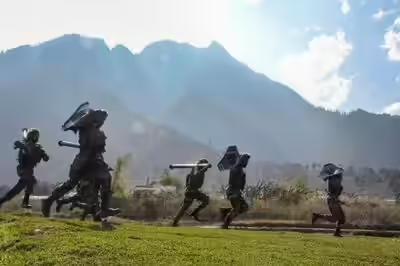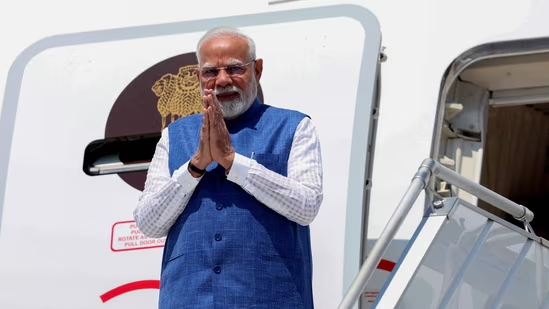In response to heightened threats from both China and Pakistan, the Indian Army is rapidly rolling out structural and technological upgrades. According to The Times of India, the move includes formation of new all-arms Rudra Brigades, light Bhairav commando battalions, and enhanced drone and missile integration under its modernisation initiative, reinforcing India’s dual-front defence readiness.
Rudra Brigades and Bhairav Battalions Take Centre Stage
The army has begun transforming select infantry formations into Rudra Brigades—permanently integrated units combining infantry, artillery, mechanised armour, drones, and Special Forces. These brigades aim to act as cohesive, self-sufficient combat teams at frontline deployment.
Meanwhile, Bhairav Battalions, a new special operations variant, are being raised to respond swiftly to tactical threats. These units are structured for rapid mobilization in high-altitude and sensitive border zones. Two Rudra Brigades have already been operationalised, with plans for expansion across critical sectors. Operation Sindoor: From Deterrence to Precision Counterstrike
Announced during Kargil Vijay Diwas, the leadership unveiled Operation Sindoor—a strategic framework aimed at shifting India’s defence posture from reactive deterrence to proactive, integrated readiness. The initiative includes recent precision missions following ceasefire violations, sharpening focus on coordinated joint operations.
Technological Integration: Drones, Smart Artillery, Air Defence
Under the ongoing modernisation push, every infantry battalion will receive drone platoons and smart artillery, significantly enhancing surveillance and combat reach. Along with this, the Army is bolstering air defence with additional missile regiments to neutralise evolving aerial threats. The transformation extends to equipping remote forward bases with real-time command and control capabilities.
Redeployment and Force Rebalancing
Historical deployments underline similar rebalancing—previously, six army divisions were shifted from Pakistan-leaning sectors to the China frontier to enhance readiness in Arunachal Pradesh and eastern Ladakh. Recent efforts include raising new Territorial Army battalions across all commands, expanding logistical capacity and border security.
IBGs and Integrated Theatre Command: Institutional Overhaul
India’s Defence Ministry continues to finalize plans for Integrated Battle Groups (IBGs)—combat formations of 5,500 to 6,000 personnel, designed to operate under one single command. These IBGs draw from infantry, armour, artillery, and aviation assets. Their deployment will complement proposed Northern and Western Theatre Commands, aimed at future tri-service coordination and enhanced strategic oversight.
Strategic Context: Rising Threats, Strategic Posture
The urgency stems from growing threats across both borders. Pakistan’s ongoing drills alongside the LoC, with upgraded radar networks and Chinese-origin air-defence assets, underscore increased aggression. Simultaneously, China maintains its military expansion via its Western Theatre Command and combined arms brigades (CABs). India’s reforms aim to restore balance and deter escalation effectively. Voices from Command: Military Readiness and Training
Lieutenant General Subramani, Vice Chief of Army Staff, reassured that the Indian Army is well-equipped to face emerging threats from Pakistan and China, while adapting to AI-driven warfare and drone-enabled battlefields. He added that training regimens now strongly emphasize technology-led preparedness.
Why It Matters
These reforms mark both a symbolic shift and structural evolution. The creation of Rudra Brigades and Bhairav Battalions signals unity between infantry, tech assets, and rapid deployment forces. Technological upgrades like drone platoons and AI-compatible systems demonstrate India’s commitment to evolving battlefield realities. As India finalizes IBGs and theatre commands, next-generation defence structures promise improved operational agility and deterrent credibility across both Western and Northern theatres.




